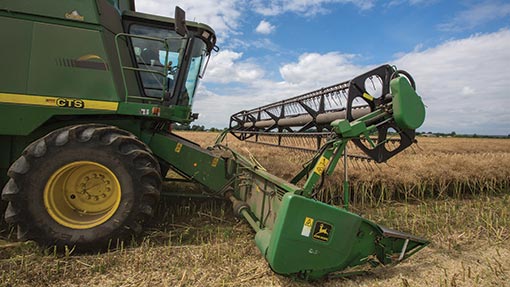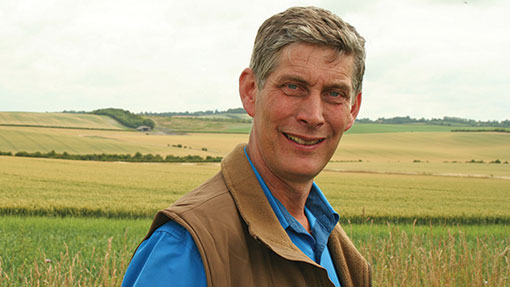Prepare your farm business for life after CAP reform

Politicians have a habit of leaving announcements to the last minute – and CAP reform rules finally unveiled by Defra this summer were no exception. Published barely more than a month before harvest, growers have had little time to consider the full effect of the new requirements.
Yet seldom has it been more important to ensure individual farm businesses are resilient to change. In many cases, the so-called “greening” rules will require costly adjustments to farm management practices – but failure to abide by them will in itself bring hefty penalties.
Due to come into effect from January 2015, farmers in England must ensure they abide by European Union greening measures or face losing up to 30% of their annual direct payment. Similar requirements are due to come into effect in Wales, Scotland and Northern Ireland and the rest of the EU.
The first requirement means farmers must grow a diverse range of crops. Dubbed the “three-crop rule”, in broad terms it means that farms with 30ha or more of arable land will have to grow at least three crops – unless they qualify for an exemption.
The second requirement means growers must set aside 5% of their arable land as an ecological focus area (EFA) – implementing environmental measures chosen from a list of Defra options designed to give farmers flexibility over how they comply with the rule.
Farmers will be able to choose how to meet the EFA requirement from a list that includes land lying fallow, buffer strips, hedgerows, the establishment of catch and cover crops, and growing nitrogen-fixing crops such as legumes.
They should also seek to retain any permanent grassland.
At the same time, farmers must ensure they adhere to cross-compliance environmental regulations. Similar to requirements under the existing scheme, Defra has reduced these measures from 17 to 11 – including the abolition of the much despised soil protection review.
Few farmers will get away with doing nothing. Hertfordshire grower Andrew Watts initially thought CAP reform greening measures would have little effect on his farm. But closer inspection suggests he will have to rejig rotations and possibly take some land out of production (see box below).
“We thought we’d be OK because as a whole we already grow three crops, so we’d easily meet the greening requirement,” says Mr Watts. “But then we realised that it will be more of a challenge – it’s going to be really difficult to rejig things from a rotational point of view.”
Financially, doing nothing is not an option. A 300ha arable unit currently growing winter wheat and oilseed rape will lose £8,975 in annual profit due to the three-crop rule alone, according to estimates by consultant Strutt & Parker.
But a similar farm specialising in high-value root crops such as sugar beet and potatoes could lose almost £34,000 a year. “This rule will affect farming costs, contract farming agreements and, ultimately, the bottom line,” says farm business consultant Charles Ireland.
Growers who intend to use hedges to count towards their EFA requirement face an additional challenge: Defra has warned that it will take time to map hedges. This could delay direct payments, it says, with a potential huge knock-on effect on farm cashflow.
Other growers will find it easier to meet their EFA requirement by growing a nitrogen-fixing crop such as peas or beans – which will also help to meet the three-crop rule while providing an opportunity to deal with blackgrass.
There are also legal aspects and business structures to consider. One of the biggest concerns voiced by growers is how greening will affect holdings that are contract farmed, but fall just above the three-crop threshold, says Julie Robinson, partner with Roythornes Solicitors.
“Greening rules add an additional layer of complexity to arrangements,” she says. “What used to be done on a handshake now needs to be documented. Parties need to make sure the agreement passes muster with inspectors as well as working between the signatories.”
An additional major change is the switch to online-only applications from next year. While many growers – especially on larger farms – will already be making online applications either directly or via agents, the NFU warns that others are yet to embrace the paperless system.
“If there’s one bit of advice it’s to start early and get adjusted to the new system well in advance of the 15 May cut-off date,” says NFU vice-president Guy Smith. “Don’t leave this to the last minute. It’s going to be a challenge and not one to be underestimated.”
It isn’t just growers who have voiced frustration at the new rules. While many farmers argue that the greening element of CAP reform goes much too far, many environmental groups argue that it simply doesn’t go far enough – on a European level, at least.
A report published in the journal Science earlier this summer argues that greening is “unlikely to benefit biodiversity” across Europe. And it calls on EU member states to introduce additional compulsory measures to protect farmed and grassland ecosystems.
Many in the industry believe environmentalists will always demand more from growers. “It may be that the new CAP does not satisfy ‘green demands’, but it never will,” says CLA eastern region director Nicola Currie. “Nevertheless, under the new CAP, farmers will still be doing more for less.”
Growers can help make their businesses resilient to any future green demands by implementing additional voluntary conservation measures on their land – such as those promoted by the Campaign for the Farmed Environment (CFE).
The industry-led initiative of 14 partners is already credited with staving off a return to compulsory set-aside under the last Labour government. It did so by demonstrating that farmers can be trusted to implement voluntary conservation measures without the need for legislation.
Voluntary environmental efforts are essential for farmers to retain government trust, believes national CFE co-ordinator Sam Durham. Buffer zones and margins should be retained – not just for wildlife, but also for improving water quality and good pesticide stewardship.
“Farmers need to act now,” says Mr Durham. “Greening is here and the industry must build on government trust to ensure future regulations work in our favour while benefiting the farmed environment. Simple voluntary environmental efforts can make greening work for
CAP greening requirements rule out block cropping
Andrew Watts (pictured below) faces the prospect of rejigging cropping and rotations to meet greening requirements on 1,400ha of owned land and 1,160ha of contract farming in north-east Hertfordshire.
The contract farming is spread across four different holdings – measuring 500ha, 280ha, 220ha and 160ha in size. The new rules mean at least three crops must now be grown on each individual farm – which rules out block cropping.
At the moment, wheat, barley, oats, oilseed rape, peas and beans are grown. There is also a suckler herd on permanent pasture. But a complication is that smaller parcels of off-lying land away from the main farms must also now meet the greening requirements.
“These are long-established contracts that have been going for many years,” says Mr Watts. “It won’t be impossible to comply with greening, but it will be more complex. We will we meet all the requirements but it will involve a lot more roadwork, administration and paperwork.”
The requirement to establish ecological focus areas on 5% of arable land could also be a challenge, says Mr Watts. “We might be able to make use of field margins, but we haven’t enough. An alternative is to grow peas or beans, but they don’t fit the soil so well on one of our farms.”
It isn’t all bad news, though. “To some extent we are fortunate because we can use elements of our stewardship schemes to count towards greening. But we don’t want to do that if we don’t have to – so we are taking a close look at everything.”


